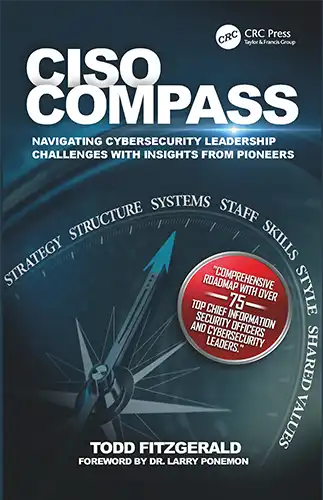01:16 The 5 Cs of Cybersecurity: Change, Compliance, Cost, Continuity, and Coverage
- Steve Chau

- Aug 12, 2024
- 8 min read
Updated: Mar 22
Essential Strategies for Protecting Your Organization in an Evolving Digital Landscape
Cybersecurity has become an integral component of organizational strategy, driven by the exponential growth of digital data and the increasing sophistication of cyber threats. The frequency and severity of cyberattacks have escalated, impacting businesses of all sizes and sectors. As organizations continue to embrace digital transformation, cybersecurity professionals face mounting challenges in safeguarding sensitive information and maintaining robust defenses. Understanding of the five Cs of Cybersecurity —Change, Compliance, Cost, Continuity, and Coverage—is essential to navigate these complexities. Each of these elements represents a critical facet of cybersecurity that, when managed effectively, contributes to a resilient and secure organizational posture.
Change is an inherent characteristic of the cybersecurity landscape. New vulnerabilities and attack vectors emerge regularly, requiring constant vigilance and adaptation. Cybersecurity professionals must stay abreast of the latest threats and advancements in security technologies to protect their organizations effectively. Compliance, on the other hand, involves adhering to a myriad of regulations and standards designed to ensure the protection of sensitive data and the implementation of adequate security measures. Regulations such as GDPR, HIPAA, and PCI-DSS impose stringent requirements on organizations, making compliance a non-negotiable aspect of cybersecurity strategy. Failure to comply can result in severe legal and financial repercussions and erosion of customer trust.
Skip To:
Balancing the cost of cybersecurity is another critical challenge. Organizations must allocate sufficient resources to implement and maintain adequate security measures without overspending. Cybersecurity costs include investments in technology, personnel, training, and ongoing management. Continuity refers to supporting business operations in the face of cyber incidents, ensuring that critical functions can be quickly restored following an attack. Business continuity planning is crucial for minimizing downtime and mitigating the impact of cyber disruptions. Lastly, coverage encompasses the comprehensive protection of an organization's digital assets, including networks, endpoints, and data. Ensuring thorough coverage requires regular risk assessments and implementing integrated security solutions to address potential vulnerabilities. Through targeted training and continuous education, cybersecurity professionals can develop the skills and knowledge necessary to address these five Cs effectively, enhancing their organization's security posture.

Change
Importance: The cybersecurity landscape is in constant flux, driven by the rapid development of technology and the ingenuity of cybercriminals. New threats and vulnerabilities emerge regularly, making it imperative for cybersecurity professionals to stay ahead of these changes. For example, the rise of ransomware attacks, such as the infamous WannaCry attack in 2017, demonstrated how quickly new threats can cause widespread disruption. Staying current with these evolving threats is crucial to maintaining a secure environment and protecting an organization's assets.
Cost and Problems of Ignoring: Neglecting the need for continuous adaptation in cybersecurity can lead to outdated security measures, which need to be revised to defend against modern threats. This complacency can result in severe consequences, such as data breaches, financial losses, and reputational damage. For instance, the Equifax breach in 2017, which exposed the personal information of over 147 million people, was partly attributed to a failure to patch a known vulnerability in their system. Such incidents underscore the critical need for organizations to continuously update and adapt their security practices to prevent similar occurrences.
Solutions: Cybersecurity professionals must engage in ongoing education and training to keep their skills and knowledge current. Pursuing industry-recognized certifications, such as Certified Information Systems Security Professional (CISSP), Certified Ethical Hacker (CEH), and Certified Information Security Manager (CISM), can provide a solid foundation in the latest security practices and technologies. Additionally, participating in workshops and industry conferences, like the RSA Conference and Black Hat, offers opportunities to learn from experts and stay informed about emerging threats and innovations. Real-world examples of successful adaptation include companies like Microsoft, which regularly updates its security protocols and invests in employee training to avoid cyber threats. By prioritizing continuous learning and skill development, cybersecurity professionals can ensure their organizations are well-equipped to handle the ever-changing threat landscape.

Compliance
Importance: Compliance with regulations and standards is fundamental to organizations' legal and operational stability. Regulations such as the General Data Protection Regulation (GDPR), Health Insurance Portability and Accountability Act (HIPAA), and Payment Card Industry Data Security Standard (PCI-DSS) are designed to protect sensitive data and ensure organizations implement adequate security measures. For example, GDPR mandates strict data protection protocols for any company handling the personal data of EU citizens, significantly impacting how organizations worldwide manage data privacy. Compliance helps avoid legal repercussions and enhances organizational reputation and customer trust.
Cost and Problems of Ignoring: Ignoring compliance requirements can have severe consequences. Non-compliance can lead to hefty fines, legal action, and loss of customer trust. The financial penalties can be staggering; for instance, in 2019, British Airways was fined £183 million for a GDPR violation. Additionally, non-compliance can disrupt operations if regulatory bodies impose sanctions, potentially halting business activities until compliance is achieved. Beyond financial and operational impacts, the reputational damage can be long-lasting, affecting customer loyalty and market position.
Solutions: Effective compliance management begins with comprehensive training programs on regulatory requirements and best practices. Cybersecurity teams must stay informed about the latest regulations and understand how to implement necessary controls. Specific certifications such as Certified Information Systems Auditor (CISA) and Certified Information Privacy Professional (CIPP) can enhance this knowledge, focusing on auditing and privacy laws. Regular audits and assessments are also crucial in ensuring ongoing compliance. Real-world examples include companies like IBM and Deloitte, with robust compliance programs that include continuous training, regular internal audits, and third-party assessments to maintain adherence to various regulations. Organizations can mitigate risks and maintain security by prioritizing compliance training and conducting frequent audits.

Cost
Importance: Managing the cost of cybersecurity is a crucial balancing act for organizations. Adequate investment in cybersecurity is essential to protect sensitive data, systems, and assets from cyber threats. However, organizations must also spend their money wisely, which can strain financial resources and divert funds from other critical areas. Striking the right balance ensures that an organization remains secure while maintaining financial health. For instance, after the 2013 data breach, Target invested significantly in improving its cybersecurity infrastructure, highlighting the importance of adequate funding to prevent similar incidents.
Cost and Problems of Ignoring: Underfunding cybersecurity can leave an organization vulnerable to attacks, resulting in significant financial losses, legal liabilities, and reputational damage. For example, the 2017 Equifax breach, which exposed the personal information of 147 million people, was partly due to inadequate investment in cybersecurity measures. Conversely, spending on cybersecurity can lead to efficient use of resources and financial strain, which can negatively impact an organization's overall health. Companies must find a balance to ensure they are protected and financially supported.
Solutions: Effective cost management in cybersecurity begins with training professionals in budget management and cost-effective security solutions. Certifications like Certified Information Systems Auditor (CISA) and Certified in Risk and Information Systems Control (CRISC) provide valuable knowledge in managing cybersecurity budgets and implementing cost-effective strategies. Investing in scalable and flexible security solutions, such as cloud-based security services, can offer long-term savings. Real-world examples include using Security Information and Event Management (SIEM) systems, which provide scalable security solutions tailored to the organization's size and needs. Additionally, adopting a risk-based approach to cybersecurity spending ensures that resources are allocated to the areas of highest risk, optimizing overall security investment. Organizations can maintain robust security by prioritizing cost-effective training and solutions without overextending their financial resources.

Continuity
Importance: Business continuity is critical for ensuring an organization can maintain its operations in the face of cyber incidents. This requires robust plans and systems to quickly recover from attacks and minimize downtime. A notable example is the 2017 NotPetya ransomware attack, which caused widespread disruption across multiple industries, including shipping giant Maersk. Despite the severe impact, Maersk could resume operations within ten days due to its effective business continuity planning. Such preparedness is crucial for sustaining business functions and maintaining customer trust during and after cyber incidents.
Cost and Problems of Ignoring: The absence of a well-defined business continuity plan can lead to significant downtime, loss of data, and disruption of services. These consequences can have a profound financial impact, as seen in the case of the 2013 Target data breach, which resulted in a loss of $162 million. Additionally, operational disruptions can erode customer confidence and damage the organization's reputation. The lack of continuity planning also hampers an organization's ability to respond effectively to incidents, prolonging recovery times and increasing the overall cost of the breach.
Solutions: Comprehensive disaster recovery and incident response planning training ensure robust business continuity. Cybersecurity professionals should pursue certifications such as Certified Business Continuity Professional (CBCP) and Certified Disaster Recovery Engineer (CDRE) to enhance their skills in developing and implementing effective continuity strategies. Regular testing and updating of business continuity plans are also crucial to ensure their effectiveness. Real-world examples include companies like JPMorgan Chase, which conducts frequent drills and updates its continuity plans to stay prepared for potential cyber threats. Cloud-based disaster recovery solutions can provide scalable and efficient options for maintaining business operations during disruptions. Organizations can better protect themselves against cyber incidents' operational and financial impacts by prioritizing training and continuously refining continuity plans.

Coverage
Importance: Comprehensive coverage is vital for protecting all aspects of an organization's digital footprint, which includes networks, endpoints, and data. Ensuring robust coverage means identifying and addressing every potential vulnerability, leaving no weak points that cybercriminals can exploit. For example, the 2013 Yahoo data breach, which affected three billion accounts, highlighted the consequences of inadequate coverage. The breach was facilitated by gaps in security, underscoring the need for thorough protection.
Cost and Problems of Ignoring: Ignoring the need for comprehensive coverage can lead to significant security gaps, creating entry points for cybercriminals. Incomplete protection can result in successful attacks, causing data breaches, operational disruptions, and substantial financial losses. For instance, the 2014 Sony Pictures hack exposed sensitive employee information and led to significant operational and reputational damage. Such incidents illustrate the high cost of neglecting comprehensive cybersecurity measures and the importance of protecting all areas of an organization's digital presence.
Solutions: Regular risk assessments and security audits are essential for identifying and addressing coverage gaps. Cybersecurity professionals should be trained to conduct thorough risk assessments and implement comprehensive security measures. Certified Information Systems Security Professional (CISSP) and Certified Information Security Manager (CISM) provide valuable knowledge in these areas. Additionally, training on integrated security solutions, such as Security Information and Event Management (SIEM) systems, can enhance overall coverage by providing real-time monitoring and analysis of security events across the organization.
Cross-departmental collaboration is also crucial for comprehensive coverage. Cybersecurity should be integrated across all business functions within the IT department. Organizations like Microsoft and Google exemplify this approach by fostering a culture of security awareness and collaboration among their employees. Regular training programs and workshops can promote a unified approach to cybersecurity, ensuring that all departments understand and adhere to security best practices. Organizations can effectively safeguard their digital assets and mitigate the risk of cyberattacks by prioritizing comprehensive coverage through regular assessments, advanced training, and cross-departmental collaboration.

Mastering the 5 Cs of Cybersecurity with Chauster UpSkilling Solutions
The five Cs of cybersecurity—Change, Compliance, Cost, Continuity, and Coverage—are foundational elements that organizations must address to build a resilient security posture. Each aspect plays a critical role in safeguarding against cyber threats; neglecting any of them can lead to significant vulnerabilities. By understanding the importance of each C and the potential consequences of overlooking them, cybersecurity professionals can implement effective strategies to protect their organizations.
Chauster UpSkilling Solutions offers comprehensive and robust training options to help staff and team members better understand the 5 Cs of cybersecurity. With courses designed to address each specific area, professionals can improve their skills in managing change, ensuring compliance, optimizing costs, maintaining business continuity, and achieving comprehensive coverage. Through continuous training and education, Chauster UpSkilling Solutions equips cybersecurity teams with the knowledge and tools to stay ahead of emerging threats, adhere to regulatory requirements, efficiently allocate resources, sustain operations during disruptions, and cover all aspects of the organization's digital footprint.
Investing in Chauster UpSkilling Solutions enhances the expertise of cybersecurity professionals and fortifies the organization's defense mechanisms. By prioritizing ongoing education and skill development, organizations can maintain a robust security posture, safeguarding their operations against the ever-evolving landscape of cyber threats.




















Comments